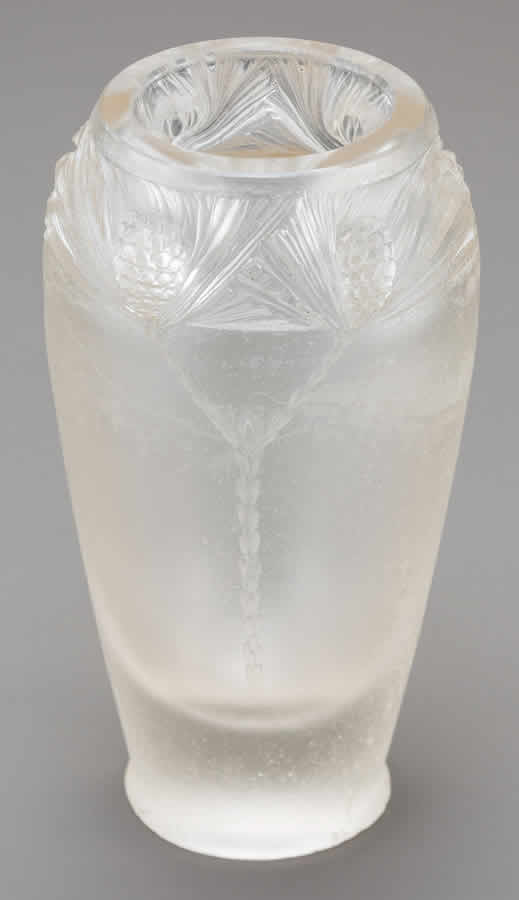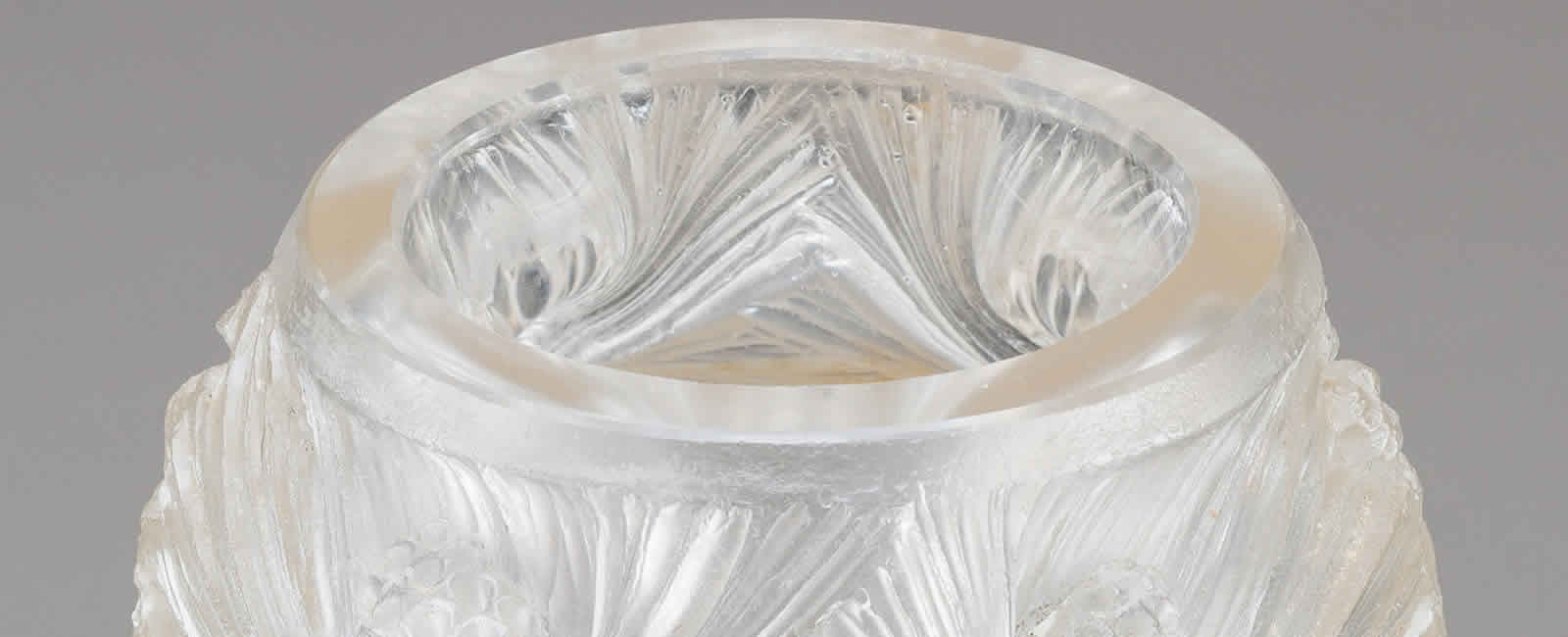GLASSMAKER USED ANCIENT TECHNIQUE THAT REQUIRED MOLD FOR EACH PIECE TO BE BROKEN
By Nick Dawes
René Lalique is widely regarded as the greatest artistic glassmaker that ever lived. Despite not turning his talents to commercial glassmaking until he was nearing 50 years of age, Lalique left an extraordinary legacy of glass creations, many of which are still produced by the company he founded over a century ago.
DO YOU HAVE THIS?
Heritage Auctions has offered thousands of Lalique pieces, but only one using the “lost wax” or cire perdue casting technique. For about 20 years until the early 1930s, Lalique (1860-1945) designed about 350 vases to be made in this ancient technique.
The object begins as a wax model (likely worked by Lalique’s own hands) which is encased in plaster of Paris. Once hardened, the mold is pierced and steam introduced through the hole, melting the wax, which then runs out (hence the term “lost wax”). Molten glass is then blown into the void. Each piece is unique, as the process requires destruction of the plaster to retrieve the finished object.
Enlarge

Cire perdue work is atypical of Lalique’s production ware in many ways, and often not recognized. An example recently surfaced on eBay after it was discovered at a Midwestern charity sale. They are typically small, ovoid vases, but figures and larger vases exist, with sharply molded detail and a “sugary” frosted surface.
These pieces will likely have an engraved number, the last two digits indicating date of production, and an incised signature in block letters (inset). The majority of these works have been recorded as designs only, with the actual finished pieces considered “lost.”
Do you have one?
If so, most are valued at more than $30,000, with some cire perdue pieces surpassing $100,000.
 NICK DAWES can be reached at 212.486.3512 or NickD@HA.com.
NICK DAWES can be reached at 212.486.3512 or NickD@HA.com.


